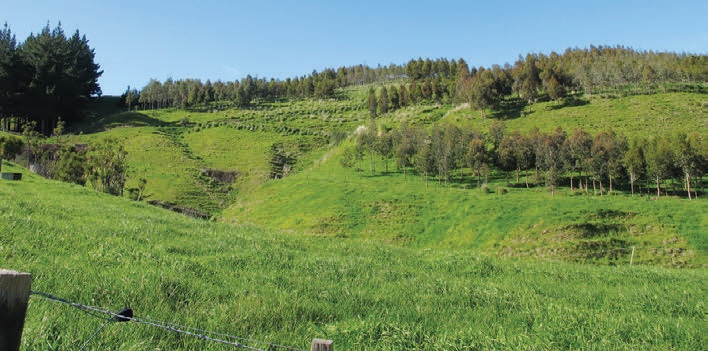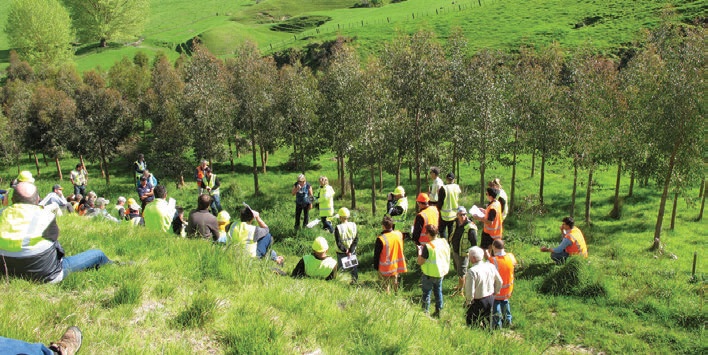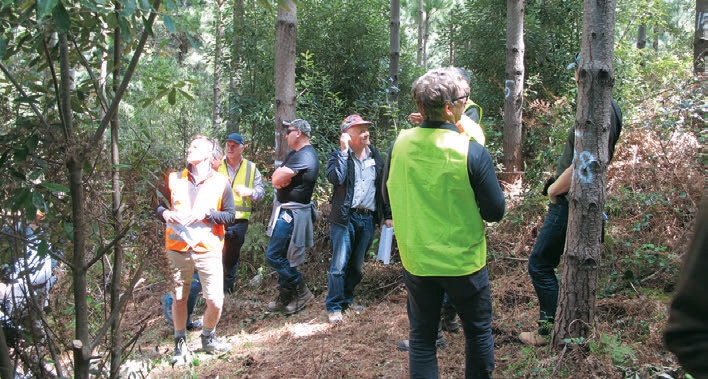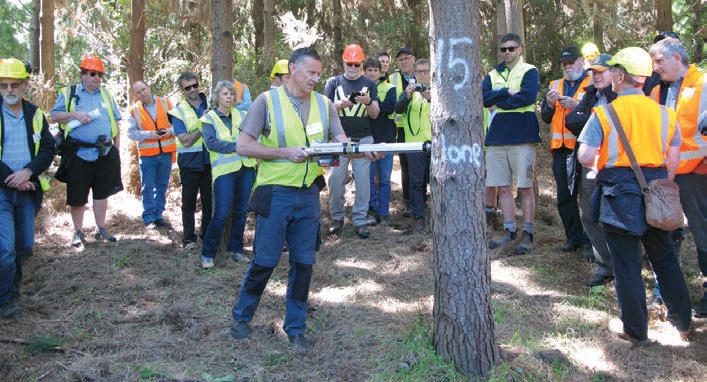
This is free.
Levy funded research conference
Julian Bateson, New Zealand Tree Grower February 2017.
In mid-October last year, the Forest Growers Research Conference was held in Napier. It was a two-day event with the first day devoted to talks and presentations and a field trip on the second day.The aim of the conference was to present information about the various research projects being undertaken which have some funding from the forest growers’ levy.The majority of the levy income for each of the two years it has been in operation is put towards forestry research. In 2015 this figure was just over $3.2 million and in 2016 a total of $4.3 million.
The conference presentations outlined a raft of projects which used levy funding as well as one or two funded from a variety of sources.The first session concentrated on productivity and looked at the conflict between increasing productivity and wood quality as well as what we may have learned from silviculture breeds trials.
Later in the morning forestry biosecurity was the theme.The reduction in use of methyl bromide as a fumigant for export logs, along with its eventual phasing out, is very much a target. Heat treatment by the use of an electrical current is a possible option, and at the moment the price could compare favourably with the current cost of fumigation at around four dollars a cubic metre.A significant amount of research on the different insect species which may be on the logs, and when they are flying around, is a significant part of this continuing project.
The poster session provided some exercise as we had to move around in groups for the various presentations on health and safety, DiscBot scanner for mapping wood property, growing tree seedlings better with less fertiliser and fungicide, and another forecaster model for radiata pine and Douglas-fir. On the forecaster project I was not impressed with a few of the jargon ridden phrases such as ‘deliver calculator-like functionality’. However, when I asked, I was told that the software system could be used by anyone, even me. Overall the sessions were enjoyable and worth attending.
The presentations reached an end with those on research into steep land harvesting, specialty wood products and perspectives on the China log market, followed by a panel discussion. Later in the day there was a dinner at which a number of awards were presented for various research projects and individuals.





 Farm Forestry New Zealand
Farm Forestry New Zealand

